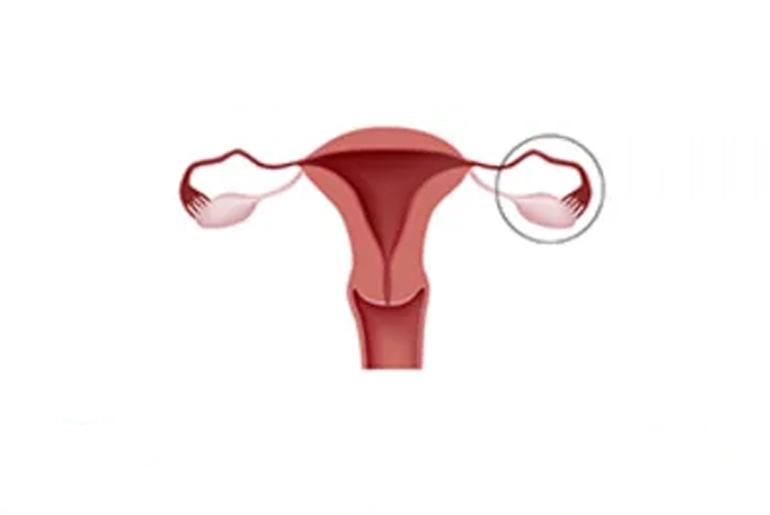Hormonal balance refers to the state in which the body’s hormones are produced and regulated in optimal amounts, allowing the various systems of the body to function effectively. Hormones play a crucial role in regulating processes such as metabolism, growth, mood, reproductive health, immune function, and stress response. An imbalance, where one or more hormones are too high or low, can lead to a variety of health issues, including weight gain, fatigue, mood swings, irregular menstrual cycles, and sleep disturbances.
Achieving hormonal balance often involves a combination of a healthy diet, regular exercise, stress management, and, in some cases, medical intervention. Practices like yoga, maintaining a balanced lifestyle, and managing stress can also support hormonal health. Yoga can be an incredibly supportive practice for managing PCOS (Polycystic Ovary Syndrome), particularly when combined with other lifestyle changes such as a healthy diet and regular physical activity. Here are some essential yoga tips tailored to manage PCOS:
1. Stress Reduction
PCOS can be exacerbated by stress, as stress hormones like cortisol can disrupt hormonal balance. Yoga poses that focus on relaxation and mindfulness help reduce stress and support hormonal health.
Recommended Poses:
- Child’s Pose (Balasana): Helps calm the nervous system and reduce stress.
- Legs-Up-The-Wall Pose (Viparita Karani): Helps to promote relaxation and balance.
- Savasana: The final relaxation pose, allowing the body and mind to rest.
Pranayama (Breathing Techniques):
- Nadi Shodhana (Alternate Nostril Breathing): This technique helps balance the nervous system and reduce stress.
2. Stimulating the Thyroid
The thyroid plays an important role in regulating metabolism, and stimulating it through yoga can help with weight management and energy levels, which are commonly affected by PCOS.
Recommended Poses:
- Bridge Pose (Setu Bandhasana): This pose stimulates the thyroid gland and can help with metabolism.
- Camel Pose (Ustrasana): It opens the chest and stimulates the thyroid.
Pranayama:
- Kapalbhati (Skull Shining Breath): Stimulates the thyroid and increases oxygen flow, which can boost metabolism.
3. Stimulating Ovarian Function
Certain yoga poses can help stimulate ovarian function by increasing blood flow to the reproductive organs and balancing hormones.
Recommended Poses:
- Cobra Pose (Bhujangasana): Encourages blood flow to the pelvic area and stimulates ovarian function.
- Butterfly Pose (Baddha Konasana): Opens the hips and enhances circulation in the reproductive organs.
- Seated Forward Bend (Paschimottanasana): Increases blood flow to the ovaries and helps to reduce stress.
4. Detoxifying with Twists
Twisting poses are great for detoxifying the body and improving digestion. They help stimulate the organs and release any built-up toxins.
Recommended Poses:
- Revolved Chair Pose (Parivrtta Utkatasana): A deep twist that detoxifies and strengthens the lower body.
- Seated Spinal Twist (Ardha Matsyendrasana): Detoxifies the digestive system and improves circulation to the reproductive organs.
5. Releasing Tension in the Hips
The hips are often a site of tension, and releasing this tension through yoga can help improve overall pelvic health and circulation, which is important for managing PCOS symptoms.
Recommended Poses:
- Pigeon Pose (Eka Pada Rajakapotasana): A deep hip opener that helps release tension in the hips and pelvis.
- Goddess Pose (Utkata Konasana): Helps open the hips and strengthens the pelvic area.
- Bound Angle Pose (Baddha Konasana): Stretches the inner thighs and opens the hips.
6. Enhancing Circulation
Improving circulation helps ensure that oxygen and nutrients are effectively delivered to the reproductive organs, which can support hormonal balance and overall health.
Recommended Poses:
- Downward Dog (Adho Mukha Svanasana): Increases circulation throughout the body, especially in the upper and lower extremities.
- Legs-Up-The-Wall Pose (Viparita Karani): Enhances blood flow to the pelvic area, reducing swelling and tension.
Pranayama:
- Bhastrika (Bellows Breath): Stimulates circulation and oxygenates the body.
7. Balancing the Mind-Body Connection
Balancing the mind-body connection through yoga encourages mindfulness, helps regulate emotions, and can reduce the stress and anxiety commonly associated with PCOS.
Recommended Poses:
- Mountain Pose (Tadasana): Helps you ground and connect with your body, establishing mental clarity.
- Tree Pose (Vrksasana): Enhances focus and balance, creating a strong mind-body connection.
- Warrior Poses (Virabhadrasana I, II, III): Build strength and endurance while promoting a sense of confidence.
Pranayama:
- Ujjayi (Ocean’s Breath): Creates a calming effect, helping to regulate the body’s energy and support mental clarity.
8. Practicing Pranayama for Hormonal Balance
Pranayama is a powerful tool for balancing hormones by calming the nervous system and supporting overall well-being. Hormonal imbalances in PCOS can benefit greatly from regular breathwork.
Recommended Pranayama Techniques:
- Bhramari (Bee Breath): This breath helps calm the mind and reduce stress, supporting hormonal regulation.
- Anulom Vilom (Alternate Nostril Breathing): Reduces anxiety, improves focus, and balances the endocrine system.
Pranayama for Specific Benefits:
- Kundalini Breathing: Energizes the body and increases blood flow to the pelvic area, supporting ovarian function.
Final Thoughts:
Yoga for PCOS should focus on gentle yet effective practices that reduce stress, stimulate key organs, and promote hormonal balance. Incorporating poses that target the thyroid, ovaries, hips, and circulation, combined with pranayama, can help regulate symptoms. It is important to maintain a consistent yoga routine to see lasting benefits, and as always, consult with a healthcare professional for personalized advice.
Practical tips for yoga practice in short:
- Consistency is Key – Practice regularly, even if it’s for just 10-15 minutes a day.
- Set Up a Calm Space – Choose a quiet, comfortable area for your practice.
- Use Proper Equipment – A yoga mat and comfortable clothing are essential.
- Focus on Breath – Synchronize your movements with deep, mindful breathing.
- Start Slow – Begin with basic poses and gradually progress to more advanced ones.
- Listen to Your Body – Respect your limits and avoid pushing through pain.
- Practice Mindfulness – Be present and aware of how your body feels in each pose.
- Stay Hydrated – Drink water before and after your practice.
- Modify When Needed – Use props like blocks and straps to adjust poses to your level.
- End with Relaxation – Finish with a few minutes of Savasana to relax your body and mind.
Disclaimer:
The information contained in this article is for educational and informational purposes only and is not intended as a health advice. We would ask you to consult a qualified professional or medical expert to gain additional knowledge before you choose to consume any product or perform any exercise.







